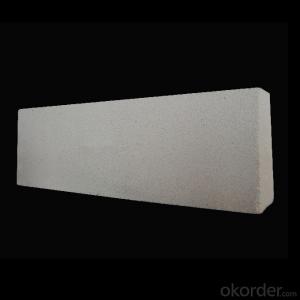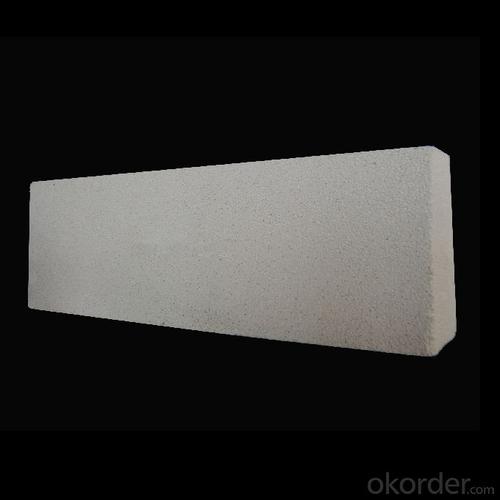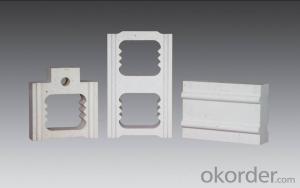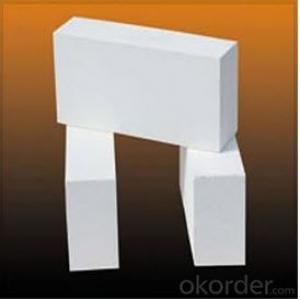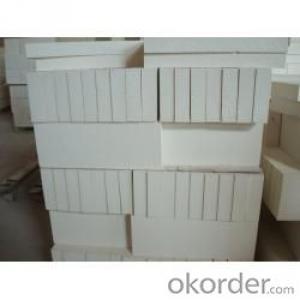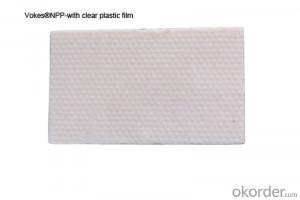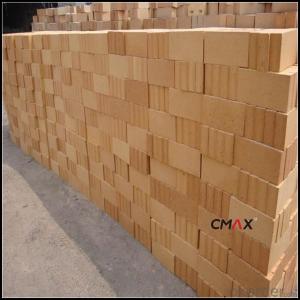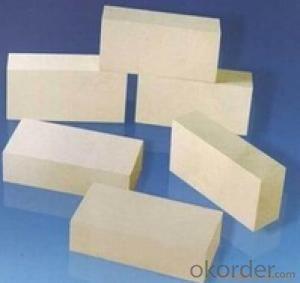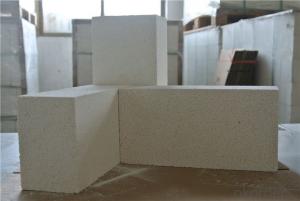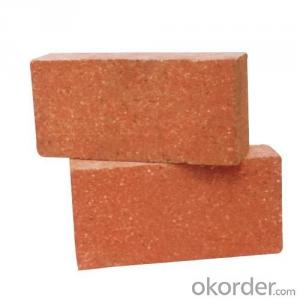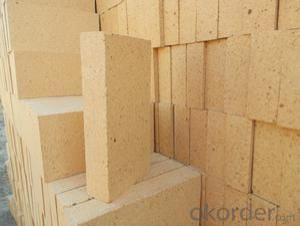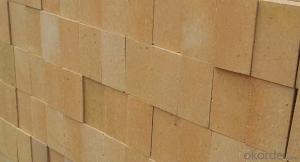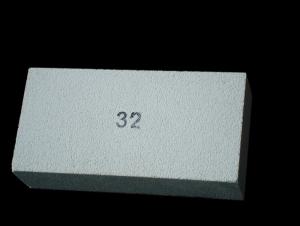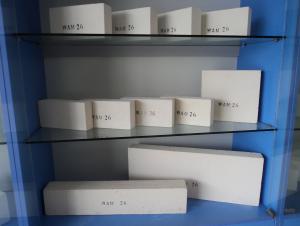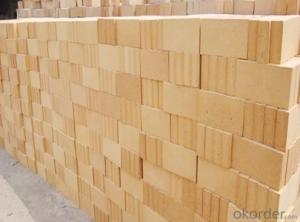Insulating Fire Brick - Lightweight for Steel Pipe
- Loading Port:
- Tianjin
- Payment Terms:
- TT OR LC
- Min Order Qty:
- 1 m.t.
- Supply Capability:
- 10000 m.t./month
OKorder Service Pledge
OKorder Financial Service
You Might Also Like
Description:
Insulating Fire Brick with Light Weight are high performance insulation products manufactured with unique shot removing and vacuum forming process, provide excellent high temperature stability, extra low thermal conductivity and compressive strength.
Advantages of Insulating Fire Brick:
Low thermal conductivity.
High strength and resistance to corrosion.
Low heat capacity.
Low shrinkage after heavy firing.
High insulation
High refractoriness.
Low density.
Applications:
Insulating Fire Brick is highly applied in below:
Steel furnaces
Iron making furnaces
Glass kiln
Ceramic tunnel kiln
Cement kiln
FAQ:
Payment term:T/T 30 deposit after order confirmed,the balance after goods ready before shipping,or L/C, or Western Uninon for small amount.
Lead time:Normally in 5-10 days after deposit received
Sample apolicy:Sample are always available for each modle
Shipping port: Tianjing
Technical Data Sheet:
Item | Insulating Fire Brick with Light Weight | |||
0.6 | 0.8 | 1.0 | 1.3 | |
Al2O3 (%) | 40 | 40 | 40 | 40 |
Fe2O3 (%) | 1.5 | 1.5 | 1.2 | 2 |
SiO2 | 55 | 55 | 55 | 55 |
Bulk Density (g/cm3) | 0.6 | 0.8 | 1.0 | 1.2 |
Apparent Porosity % | 70 | 60 | 55 | 50 |
Cold Crushing Strength (Mpa) ≥ | 2.0 | 2.5 | 3.0 | 4.0 |
Reheating Linear Change (%)°C X 12H ≤ | 1300℃ -0.5 | 1350℃ -0.5 | 1350℃ -0.9 | 1350℃ -0.9 |
Thermal Conductivity((W/m.k)(1000°C) | 0.33 | 0.60 | 0.45 | 0.80 |
Max Service Temperature (°C) | 1200 | 1280 | 100 | 1350 |
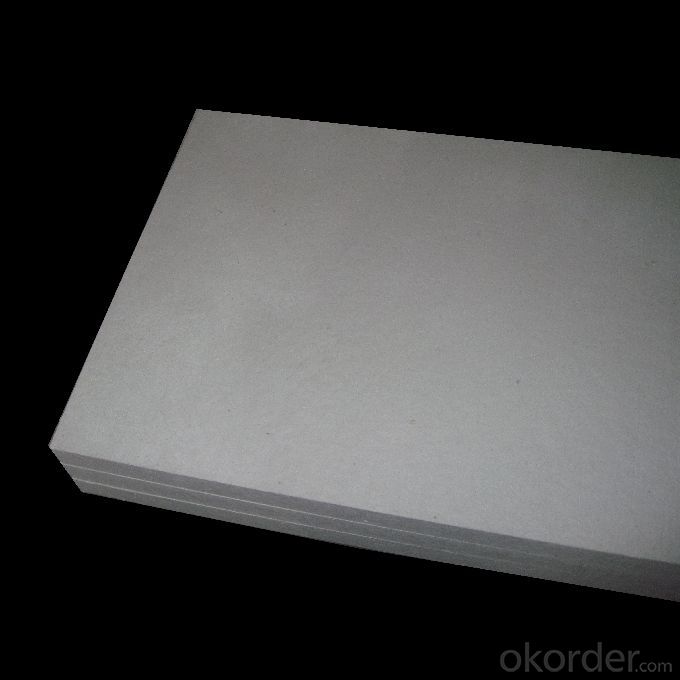
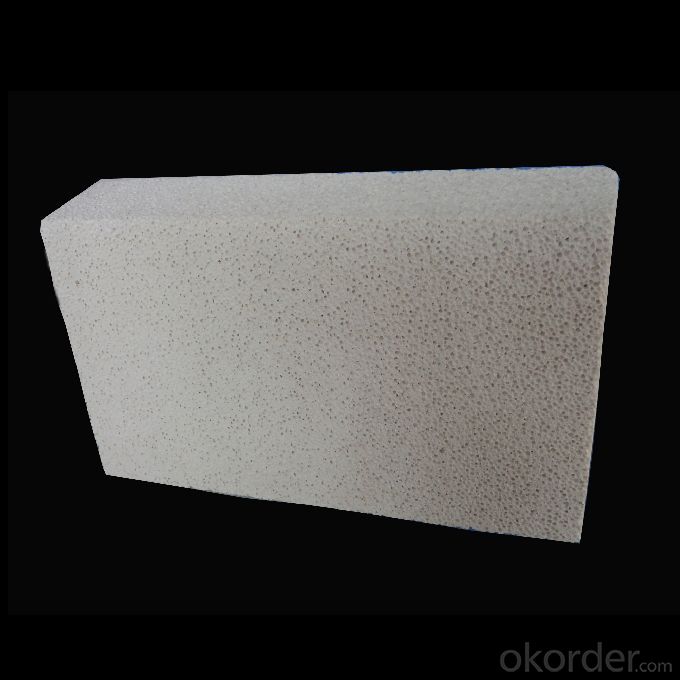
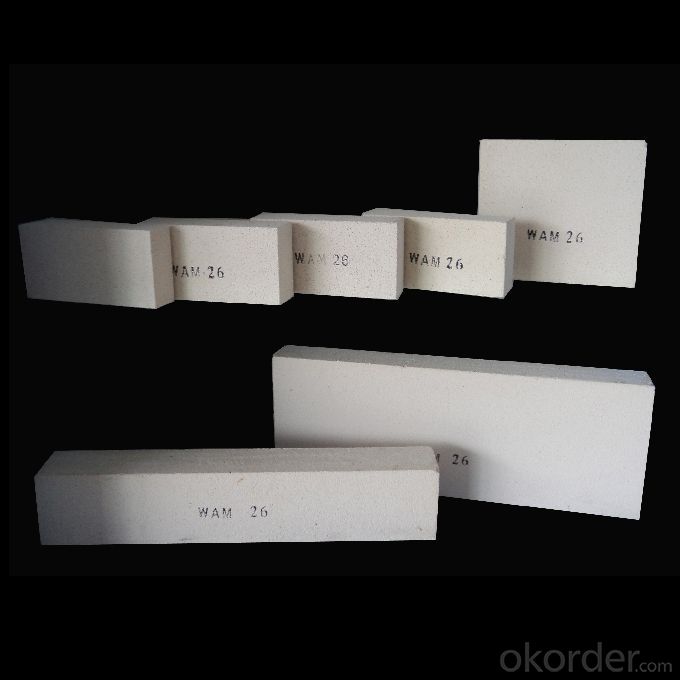
- Q: Can insulating fire bricks be used as a lining for kiln cars?
- Yes, insulating fire bricks can be used as a lining for kiln cars. These bricks are designed to withstand high temperatures and have excellent insulating properties, making them ideal for use in kilns where heat retention is required. Additionally, their lightweight nature makes them suitable for use on kiln cars, which need to be moved frequently.
- Q: Can insulating fire bricks be used in the construction of tundishes?
- Yes, insulating fire bricks can be used in the construction of tundishes. Tundishes are commonly used in the steel industry to distribute molten metal, and insulating fire bricks are ideal for this purpose as they have excellent thermal insulation properties and can withstand high temperatures.
- Q: The insulation layer destroyed after use of cement paste and tiling
- Attach tiles directly to the insulating layer. But one requirement is to check the insulation process in the balcony of your house. Usually wall - insulation layer - galvanized wire mesh - cement mortar, scraping - paint. If the lack of process fill such as galvanized mesh, remove paint, and tiling. You can use high mark cement or direct adhesive.
- Q: Can insulating fire bricks be used in cement plants?
- Certainly, cement plants can utilize insulating fire bricks. These bricks are specifically engineered to endure extreme temperatures and are widely employed in thermal insulation-demanding industries. Within cement plants, they can find diverse applications, including kiln lining, furnace lining, and other equipment operating at high temperatures. These bricks effectively decrease heat dissipation, enhance energy efficiency, and maintain stable and regulated temperatures during cement production. Furthermore, insulating fire bricks possess a lightweight nature and exhibit low thermal conductivity, rendering them an optimal selection for insulation purposes within cement plants.
- Q: How do insulating fire bricks affect the overall carbon footprint of a structure?
- Insulating fire bricks can significantly reduce the carbon footprint of a structure. These bricks have higher thermal insulation properties compared to traditional bricks, which means they can better retain heat and reduce the need for excessive heating or cooling. By improving energy efficiency and reducing the consumption of fossil fuels, insulating fire bricks help to lower the carbon emissions associated with the structure's operation. Additionally, their longer lifespan and recyclability contribute to further environmental benefits by reducing waste generation and the need for frequent replacements, ultimately minimizing the overall carbon footprint of the structure.
- Q: Can insulating fire bricks be used as a backup insulation material?
- Indeed, insulating fire bricks can serve as an alternative insulation material. These bricks are specifically engineered to possess a low thermal conductivity, enabling them to effectively reduce the transfer of heat. Consequently, they are well-suited for deployment as backup insulation in situations where maintaining temperature stability is of utmost importance. Their usage in industrial furnaces, kilns, and other environments characterized by high temperatures is quite common, particularly when the primary insulation material is prone to failure or necessitates additional reinforcement. By providing an additional layer of insulation, insulating fire bricks contribute to the prevention of heat loss and the enhancement of energy efficiency. Moreover, their durability and ability to withstand high temperatures establish them as a dependable choice for backup insulation.
- Q: Are insulating fire bricks suitable for applications with high mechanical stress?
- Insulating fire bricks are generally not suitable for applications that experience high levels of mechanical stress. They are specifically designed to offer exceptional thermal insulation and are constructed from lightweight materials like clay, ceramic fibers, or vermiculite. Despite their excellent insulation capabilities, they do not possess the same strength or durability as structural fire bricks or other refractory materials. When it comes to applications that involve heavy mechanical stress, such as robust furnaces, kilns, or industrial processes with significant movement or loading, fire bricks capable of withstanding these forces are necessary. These applications typically rely on dense fire bricks or refractory materials that exhibit greater compressive strength and resistance to mechanical stress. Opting for insulating fire bricks in applications with high mechanical stress can result in issues such as cracking, crumbling, or premature failure of the bricks. This compromises the system's integrity and efficiency. Therefore, it is crucial to carefully select the appropriate fire bricks or refractory materials that can endure the specific mechanical stress requirements of the application.
- Q: Can insulating fire bricks be used in the construction of boilers for power plants?
- Yes, insulating fire bricks can be used in the construction of boilers for power plants. These bricks have excellent insulating properties, which help to retain heat and increase energy efficiency in the boilers. Additionally, their lightweight nature reduces the overall weight of the construction, making them a suitable choice for power plant boilers.
- Q: Are insulating fire bricks resistant to moisture penetration?
- Yes, insulating fire bricks are resistant to moisture penetration. These bricks are designed to have low porosity, which means they have a very low water absorption rate. This characteristic makes them highly resistant to moisture penetration. Insulating fire bricks are commonly used in applications where they are exposed to high temperatures and harsh conditions, such as kilns, furnaces, and fireplaces. Their resistance to moisture penetration ensures their durability and effectiveness in these environments.
- Q: Can insulating fire bricks reduce heating or cooling costs?
- Insulating fire bricks possess the ability to decrease heating or cooling expenses. These bricks are specially designed to exhibit a high level of thermal insulation, meaning they possess low thermal conductivity and can effectively hinder the transfer of heat between a building's interior and exterior. In the construction of fireplaces, ovens, or kilns, the utilization of insulating fire bricks aids in retaining heat within these structures. This enables them to achieve and maintain higher temperatures while consuming less energy. Consequently, this leads to substantial savings on heating costs, as the desired temperature can be achieved with reduced energy usage. Similarly, when employed in the construction of walls, insulating fire bricks serve to minimize heat transfer between a building's inside and outside. This results in decreased heating or cooling requirements, as the insulation helps to maintain a consistent indoor temperature. Subsequently, less energy is needed to heat or cool the building, resulting in lower energy bills and reduced overall heating or cooling expenses. It should be noted that the effectiveness of insulating fire bricks in reducing heating or cooling costs can vary based on factors such as overall building insulation, structure size and design, and climate conditions. Nevertheless, in general, the utilization of insulating fire bricks can contribute to energy efficiency and cost savings in heating or cooling systems.
Send your message to us
Insulating Fire Brick - Lightweight for Steel Pipe
- Loading Port:
- Tianjin
- Payment Terms:
- TT OR LC
- Min Order Qty:
- 1 m.t.
- Supply Capability:
- 10000 m.t./month
OKorder Service Pledge
OKorder Financial Service
Similar products
Hot products
Hot Searches
Related keywords
